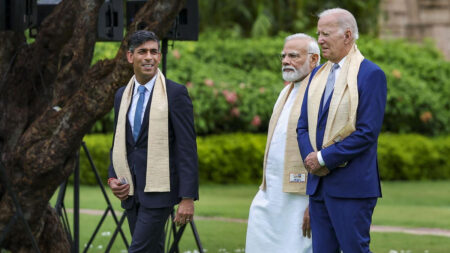Recent social media footage of a woman using the Delhi metro while wearing a Handmade bralette and a skirt has gone viral, drawing explicit to condemnatory comments. This has sparked a discussion on “obscenity” and free speech in India.

What is stated in the obscenity law?
Obscene material cannot be sold, distributed, or published, according to Section 292 of the Indian Criminal Code (IPC). Also, it offers the IPC’s exclusive definition of “obscene.” According to the provision, anything that is lascivious or appeals to the prurient interests shall be considered obscene. Some regulations take the issue of “obscenity” and “indecency” into consideration, even though these categories are commonly recognised to be arbitrary and ambiguous.
The 1986 Indecent Representation of Women (Prohibition Act) criminalises coarse representations of women, which says that any kind of illustration of women in the matter of figure or any other part in such a way as to be indecent or derogatory to women or has the chance to deprive or corrupt public virtue or morals. The Act imposes a range of penalties, including:
First offence: Up to two years in prison and a fine of Rs 2,000.
Repeat offence: Up to five years in prison and a fine ranging from Rs 10,000 to Rs 1 lakh.
The Information Technology Act’s provisions were created along with the Internet era. Online obscenity is a topic covered under Section 67(A) of the Information Technology Act. The Section specifies a “penalty for publishing or transmitting, in electronic form, a material comprising a sexually explicit conduct.”
Senior attorney Vikas Pahwa told India Today that the meaning of “obscenity” under Indian law is “subjective.” The definition of obscenity in our nation depends on the audience for the offending material. It is based on the moral standards of the populace. Obscenity and vulgarity are not the same things. What we witnessed on the Delhi Metro was obscene and filthy.
The Obscenity Law has been used in a few cases in India, most recently with FIRs being filed against actor Ranveer Singh for a nude photograph that he uploaded on social media and against model Milind Soman for tweeting pictures of him running on the beach in his underwear. This is because insufficient evidence was presented to the court, and an older obscenity lawsuit against Milind Soman for a nude photoshoot in 1995 was dismissed in 2009.
The Supreme Court noted that the terms “sex” and “obscene” are not always equivalent, and it is inappropriate to characterise just the mention of “sex” as intrinsically obscene, much alone indecent or immoral in the ruling of the KA Abbas case from 1971. It was further noted that the criteria for determining obscenity must be that of the ‘reasonable’ person rather than the one who is the least intelligent and most wicked.
The “Community Standard Test” was established by the Supreme Court in the historic Aveek Sarkar decision from 2014 to define obscenity. In this instance, it was decided that the image cannot be deemed obscene on its own if there is no intention to cause sexual passion in people who view the image or are likely to see it, no overt sexual desire is revealed, and there is no tendency to elicit sensations.
A woman going on the Delhi Metro in a miniskirt and bralette has been spotted doing it twice. According to the Aveek Sarkar Decision of 2014’s “community standards” rules, the issue is whether the apparel is “obscene” or simply tasteless and imprudent in a public setting used by people from all societal groups.
Recently, calls to report model Uorfi Javed for obscenity on social media for her pictures of herself wearing skimpy attire were made. Though no legal judgements have been made as of yet, FIRs were also filed in connection with the occurrences involving Ranveer Singh and Milind Soman.
Invasion of Privacy
The IT Act of 2000’s Section 66E addresses privacy violations and imposes penalties for taking, publishing, or sending images of a person’s intimate areas without that person’s permission. This includes taking or disseminating photos of a woman’s intimate spaces without her permission.
Furthermore, the publication or transmission of any content that is even potentially pornographic in electronic form is impermissible, by Section 67 of the IT Act, 2000. This includes any content that is lewd or piques the curiosity of the perverse and has a propensity to deprave and corrupt individuals. If someone is found guilty of breaking the aforementioned rules, they could face up to three years in prison and/or a fine.
Advocate Soutik Bannerjee claims that the creator of the now-viral images and videos may be held accountable under the IT Act.
DRMC’s stand
A DMRC (Delhi Metro Rail Corporation Limited) representative also noted that the organisation has not received any complaints about the attire of female passengers or about having their picture or video recorded while riding the metro.
Although the applicable law is murky and complex, social media criticism of women’s dress appears to reflect a broader popular sentiment regarding freedom of expression and decency in public places.













